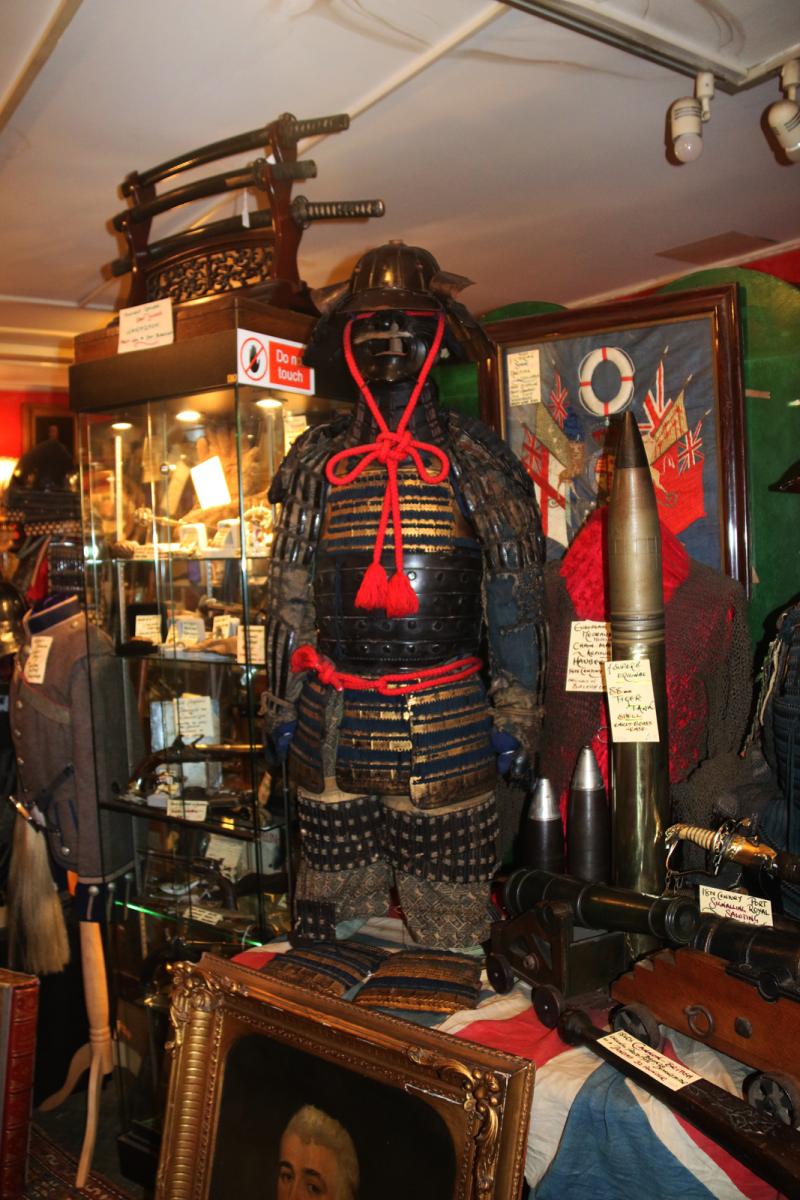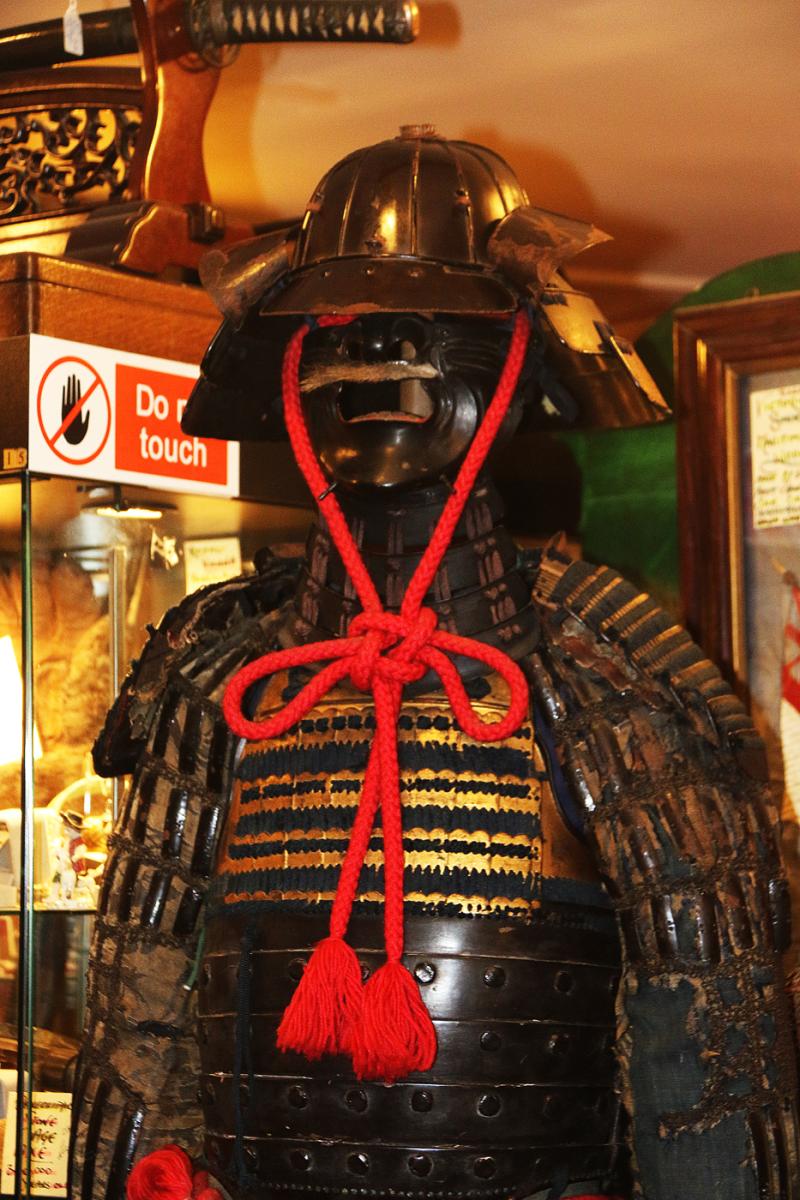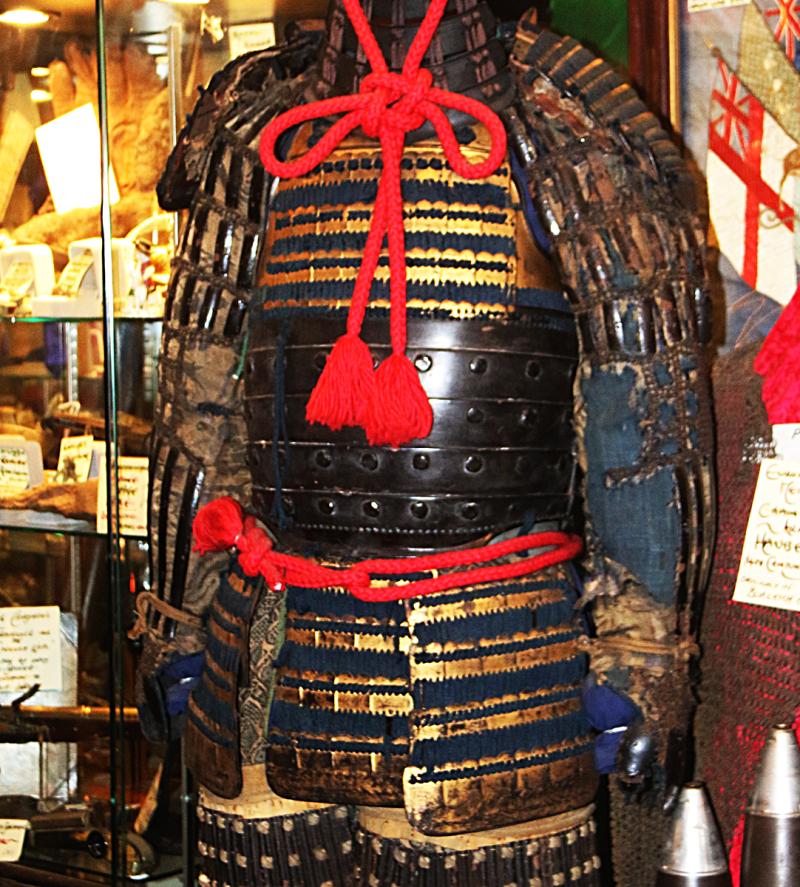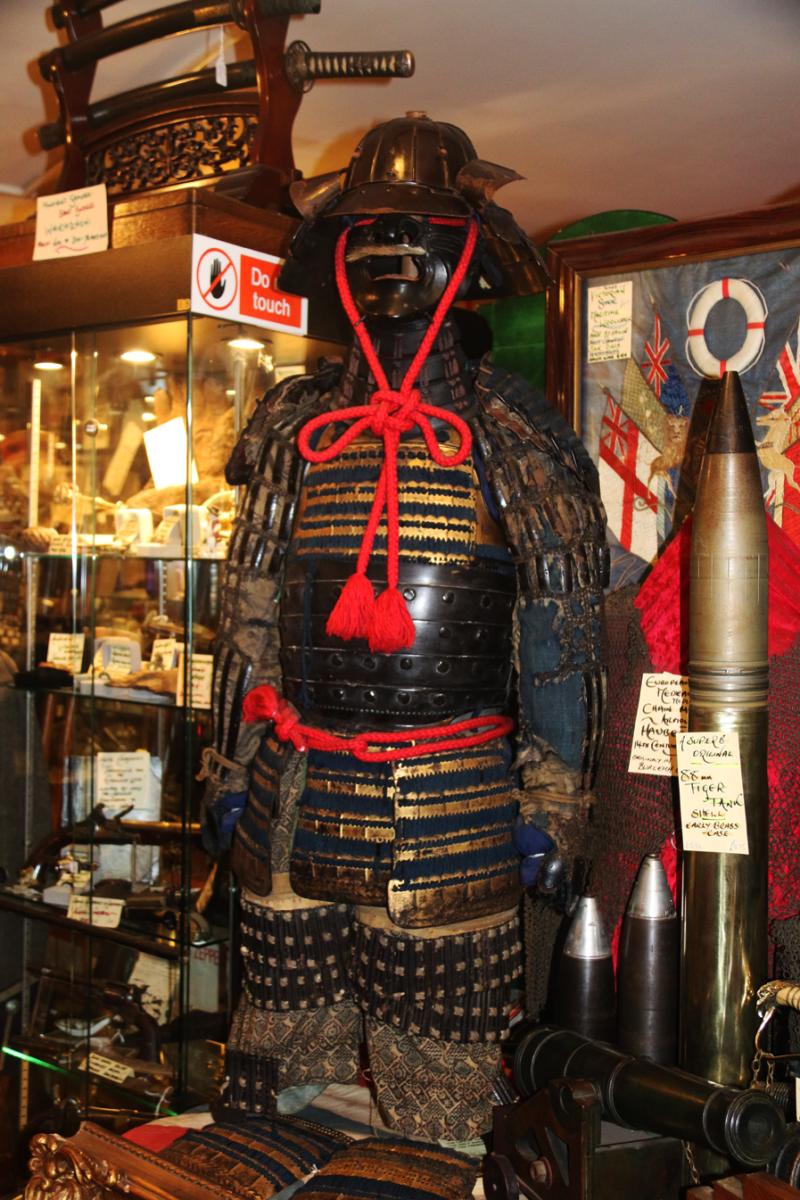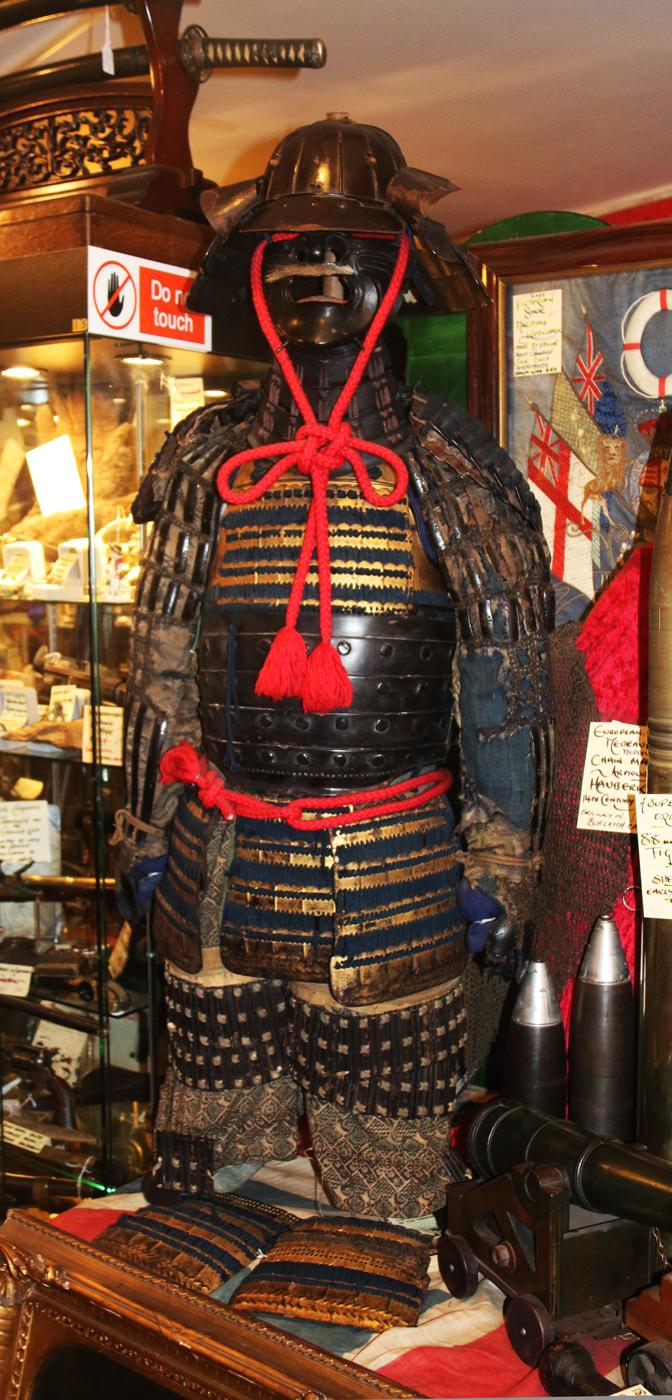A Beautiful Suit of Edo Samurai Armour in Gold and Black Lacquer With Blue and Black Lacing, Multi Plate Helmet with Dragon Fly Fukegaeshi, With Ressai {Fierce Face} Menpo
This is a wonderful piece of Japanese Samurai 'art' made for warfare, in a mixture of golds and black lacquer with blue and black with multi plate kabuto {helmet} with a dragonfly on the lacquer oneach front wing, and ressai {fierce face} mento face armour, which features a kuchi hige (mustache), shiwa (facial wrinkles). Extremely collectable art that is most desirable in its own right, often stunningly used for interior decoration as an individual work of samurai art in its own right. A very good urushi lacqured embossed iron mask of 'Me no Shita Men' (half face) type.
Gold and black lacquer do with blue lacing, kazuri with blue lacing, gold and blue laced shirokoro, kusazuri in gold lacquer and purple lacing, armoured sleeve kote.
This armour has remained untouched since it arrival in England likely over a hundred years ago, and probably for longer than that when it was in Japan, and only the two red cords have been replaced on the helmet and waist. We are leaving it exactly as is
Samurai used dragonfly motifs on their armour, clothing and weapons in hope of success in battle.
The urushi lacquer saya is in ishime stone finish pattern.
Japan was once known as the “Land of the Dragonfly”, as the Emperor Jimmu is said to have once climbed a mountain in Nara, and looking out over the land, claimed that his country was shaped like two Akitsu, the ancient name for the winged insects, mating.
Dragonflies appeared in great numbers in 1274 and again in 1281, when Kublai Khan sent his Mongol forces to conquer Japan. Both times the samurai repelled the attackers, with the aid of huge typhoons, later titled Kamikaze (the Divine Winds), that welled up, destroying the Mongol ships, saving Japan from invasion. For that reason, dragonflies were seen as bringers of divine victory.
Dragonflies never retreat, they will stop, but will always advance, which was seen as an ideal of the samurai. Further, although the modern Japanese word for dragonfly is Tombo, the old (Pre Meiji era) word for dragonfly was Katchimushi. “Katchi” means “To win”, hence dragonflies were seen as auspicious by the samurai.
Insects in general have been celebrated in Japanese culture for centuries. The Lady Who Loved Insects is a classic story of a caterpillar-collecting lady of the 12th century court; the Tamamushi, or Jewel Beetle Shrine, is a seventh century miniature temple, once shingled with 9,000 iridescent beetle forewings. In old Japanese literature, poems upon insects are to be found by thousands, Daisaburo Okumoto is director of the Fabre Insect Museum. An avid insect collector and a scholar of French literature, he has translated many of Fabre's works. He ascribes the popularity of insects in Japan to national character. It seems like Japanese eyes are like macro lenses and Western eyes are wide-angle, he says. A garden in Versailles, it's very wide and symmetrical. But Japanese gardens are continuous from the room and also very small. We feel calm when we look at small things. The medieval Japanese monk Yoshida Kenko put it this way: “If man were never to fade away like the dews of Adashino, never to vanish like the smoke over Toribeyama, how things would lose their power to move us!
In the 16th century, Japan began trading with Europe, during what would become known as the Nanban trade. This was the first time matchlock muskets were imported, and as they became mass-produced domestically, samurai needed lighter and more protective armour. As a result, a new style of armour called tosei-gusoku (gusoku), which means modern armour, appeared. After the Battle of Sekigahara and the victory of the Tokugawa, a united Japan was created and entered the so-called 'peaceful Edo period', however, then from henceforth, the shoguns promoted rivallry between his daimyo fuedal clan lords, in order for their military ambitions, attention and suspicions to be upon each other, rather than the shogun. So there were no wars, as such, for over 250 years, but, hundreds of internecine battles, thus samurai continued to combat as usual, using both plate and lamellar armour. This practice, of a version of divide and conquer, of internal factions, rather than external forces, was adopted by many despots ever since, including Sadam Hussein of Iraq, extremely efficiently, and for over 20 years in his case.
Ōyamazumi Shrine is known as a treasure house of Japanese armour. It houses 40% of Japanese armour that has been designated as a National treasure and an Important Cultural Property. Kasuga Grand Shrine is also known as a treasure house of valuable armour
Every single item from The Lanes Armoury is accompanied by our unique Certificate of Authenticity. Part of our continued dedication to maintain the standards forged by us over the past 100 years of our family’s trading, as Britain’s oldest established, and favourite, armoury and gallery
Code: 25318
12950.00 GBP


